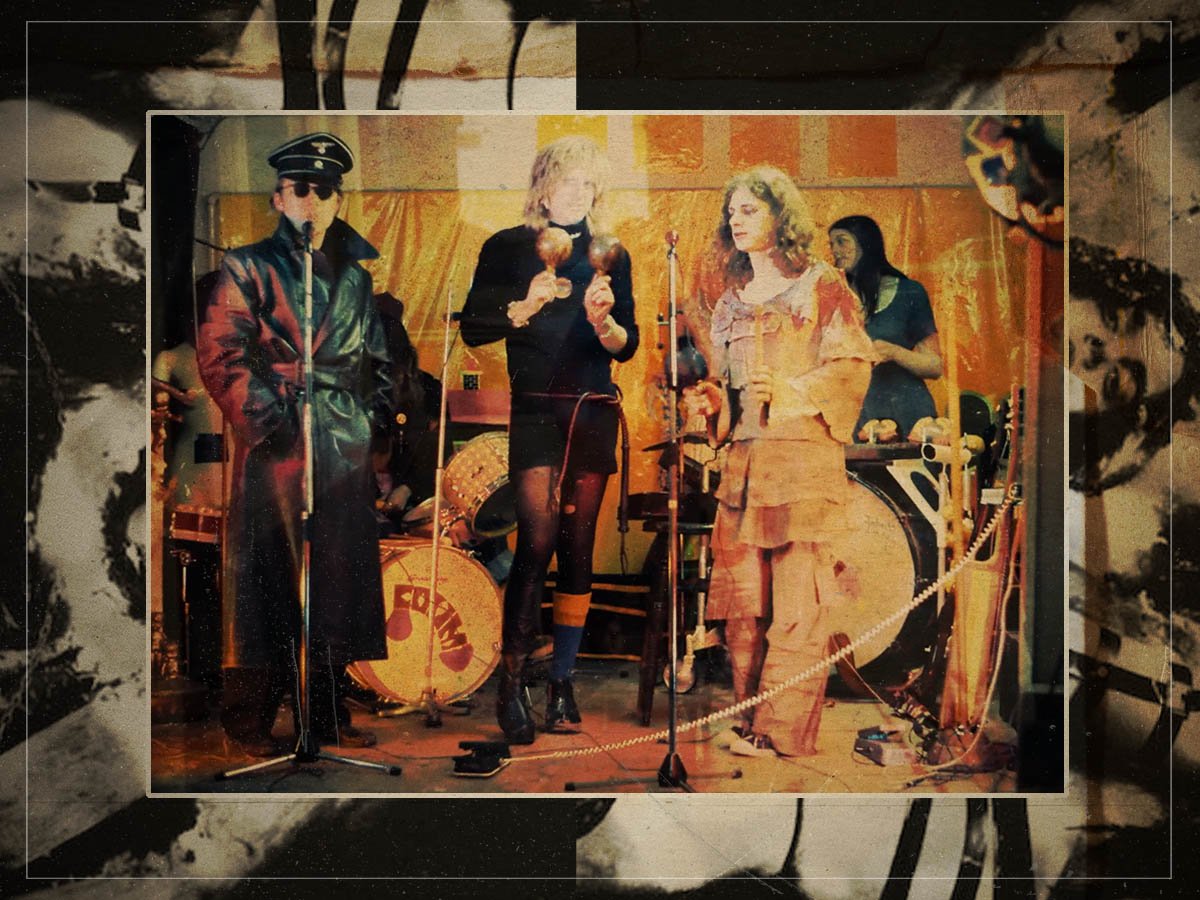
(Credits: Far Out / COUM Transmissions / YouTube Still)
Cosey Fanni Tutti might not be a globally renowned name, but in Britain, she is considered by many, both members of the public and fellow artists, as one of the most influential and controversial artists of the 1970s.
Born in the northern city of Hull, to a working-class family, she was inspired by its rich cultural heritage, which nonetheless maintained a great sense of humbleness and austerity—something she learned to love, admire and practice herself as a budding artist.
She became part of a prominent group of highly transgressive, provocative and anarchic artists called COUM Transmissions, formed at Hull University. Their motto was to become “the soundtrack to how people felt about the state of the UK”. Alongside her in the collective was Genesis P-Orridge, a Manchester-born gender-fluid and non-binary artist committed to tearing up taboos and unsettling the status quo through performance, art and music.
Neither Fanni Tutti nor P-Orridge came from an academic musical or artistic background, but it was exactly this fact that they based their entire style upon. This allowed them to establish their own style, with the mistakes and non-conventional musical practices giving space to make something unique and different to what was already out there.
P-Orridge described their work as the “bastardisation” of music and modern musical technologies, as the band would take musical instruments, often second-hand ones that had been abandoned or broken, and completely reinvent their purpose. Another deliberate choice the group made was not to have a drummer in their musical performances because they associated drummers with excessively Western European rock. They did not want to trap their music in a specific genre, which would allow for little creative exploration. Today, COUM Transmission’s work is labelled as industrial music, which paved the way for other avant-garde genres like synth-pop, techno and D&B to be normalised in mainstream media.
The group was inspired by the counterculture introduced by John Cage, Aleister Crowley and Andy Warhol. The members would experiment with their personas and identities by developing different characters for Happenings, a style of performance art that relied on improvisation. During these, they would wear peculiar clothing and play around with names, genders and initiate socio-political conversation.
In October 1976, the group that had now amassed fans across the UK, played their third gig at the Institute of Contemporary Arts (ICA) in London, branding themselves as the “wreckers of civilisation”. Not always receiving praise, and bearing the brunt of much ridicule and criticism, they were committed to ensuring that their work was only broadcast by underground publications and so-called “yellow” journalists.
As published in his monograph Painful but Fabulous, in the words of Genesis P-Orridge, this was because, “the declared policy during all COUM Transmissions actions in the years 1969–76 was to refuse to arrange any planned, formal or in any manner preconsidered documentation that could function to compromise the ‘source dream’ that so often inspired the actions.”
However, COUM’s productions became increasingly more extreme. For example, their project called Couming of Youth, held in Amsterdam, involved bodily fluids, nudity and profane sexual acts that increasingly pushed the boundaries of performance art. The tipping point came with Prostitution, a major gallery retrospective at the ICA that included images of Cosey Fanni Tutti as a pornography model framed as legitimate art, a stripper performance and used tampons and syringes as relics from previous performances.
The media backlash from this exhibition was actively incorporated into the installation itself, turning it into an ever-evolving exhibit. However, on a personal level, Prostitution caused Fanni Tutti some irreparable damage with regards to her family, and the two became estranged.
Additionally, the artist recalled the difficulties of working as a pornography model at the beginning, which felt scary and unsafe a lot of the time. These sentiments also became part of the exhibition as Fanni Tutti wanted to expose the difficulties of being a sex worker.
Finally, during their last live act, 1978’s Scenes of Victory, in Antwerp, the group was dissolved following P-Orridge’s collapse after ingesting toxic substances, bringing his career as a performance artist to a close. During the performance, they injected a mixture of whiskey, assorted poisonous and hallucinogenic plant matter and performed acts of self-mutilation by cutting themselves with nails. This caused them to collapse on stage and be rushed to the hospital. However, they left a lasting impression on the industry with their final manifesto that rejected conventional meaning and valued chaos over polished mainstream hegemony.
Related Topics







